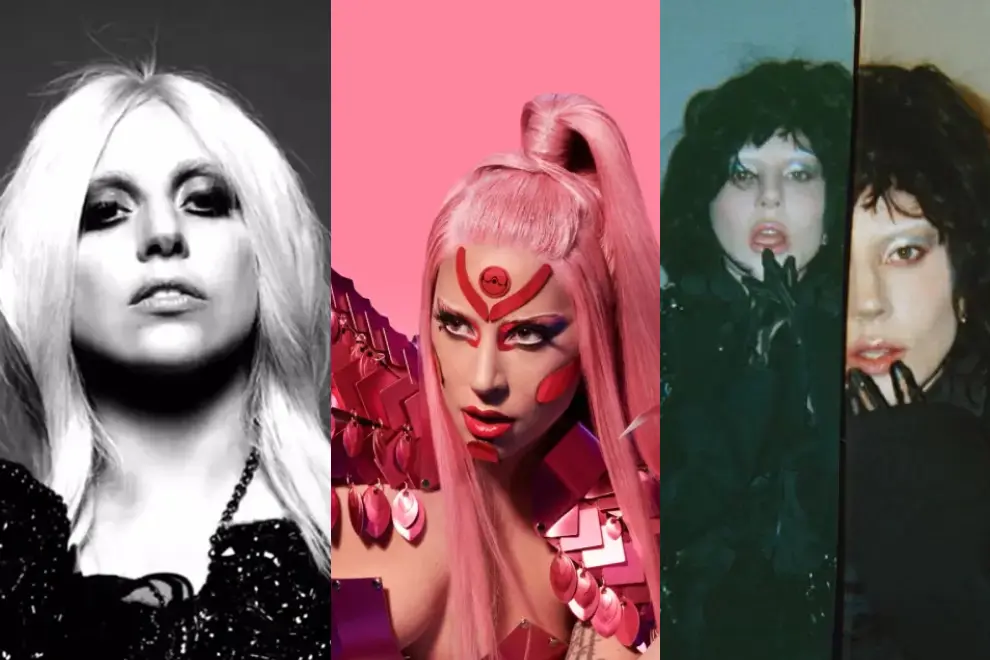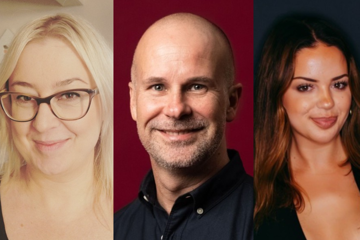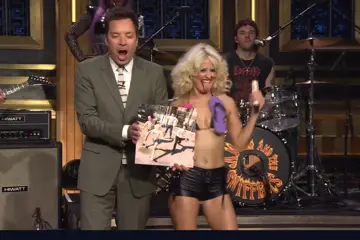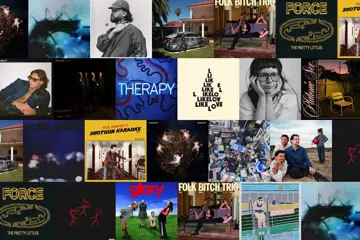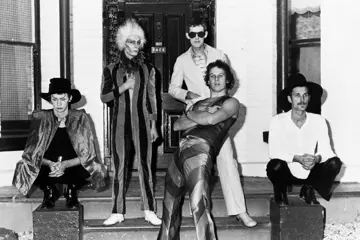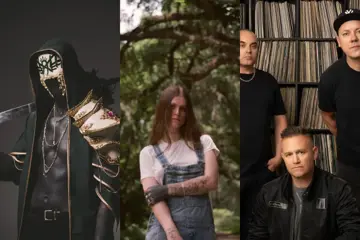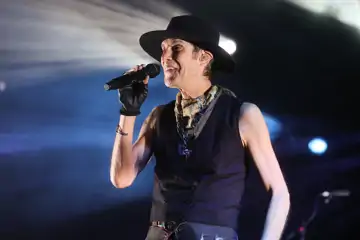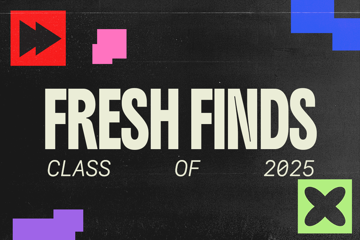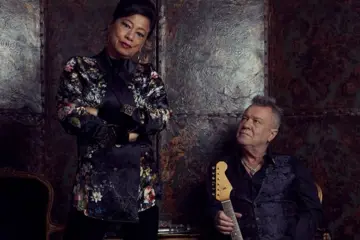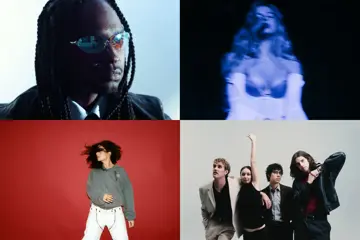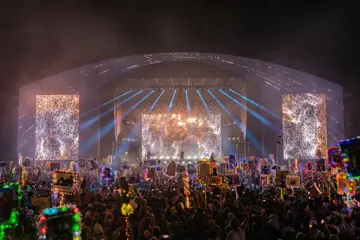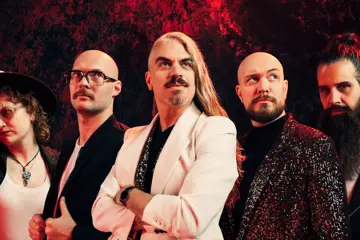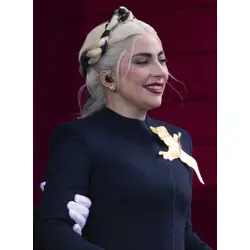 Lady Gaga
Lady GagaYou never know where you are in Lady Gaga’s world. As a songwriter, she continually comes up with twists in the narrative.
But she’s just as much uses the concept of “art as unfinished business” via its video, artwork or live rendition. Alternatively, the way the world reacts to her individual work also casts a new shape on a song.
Here are seven examples.
TELEPHONE (2010)
Originally written for Britney Spears, Telephone was inspired by how Gaga felt she wasn’t giving herself enough time off to really let her hair down.
She called it "suffocation—something that I have or fear is never being able to enjoy myself. ‘Cos I love my work so much, I find it really hard to go out and have a good time.”
Beyoncé made an appearance on the track and in the video.
They met with Gaga sitting behind her at the now-infamous 2009 MTV Video Music Awards when Kanye interrupted Taylor and got yelled at by P!nk. They nodded at each other.
The relationship cemented at a women-in-music luncheon, and Gaga dropped the invite. Beyoncé rang her back and signalled her interest.
Telephone was nominated for a Grammy, and it received 500,000 YouTube views in its first 24 hours. Eventually, it sold 7.4 million digitally. In Australia, it reached #3 and was certified 8 x platinum for selling 560,000 copies.
But the twist in the song, according to Gaga, was that it was a “commentary on being overfed, communication, advertisements, and food in this country.”
The video, shot over two days with 300 set-ups, included reference to “American hallmarks, like with soda cans, and cigarettes, and mayonnaise, and bread.”
HOW BAD DO U WANT ME (2025)
The song won acclaim for its scenario of a straight couple in their bedroom. She was not asking “how badly do you want me,” but, craving and insecure, how bad he wants her to be:
The good girl in your dreams
Is mad you're lovin' me
I know you wish that she was me
How bad, bad do you want me?
The conflicted male, in turn, panicked at the vibes he might have been subconsciously sending out, and whether he actually desired the image and not the person.
Gaga began writing this solo in her home, before bringing in fiancé Michael Polansky to help. He read the lyrics she’d written and asked if they were about him. She denied it.
They finished it off with Andrew Watt and Cirkut, who were its producers alongside Gaga.
But it transpired that How Bad Do U Want Me was actually written for her audience, about what they wanted from her image, and whether she was delivering it to them.
Interestingly, the track was almost dropped from the Mayhem album because the singer thought it was “too super-pop”. Similarly, Just Dance from The Fame (2008) almost got dropped for the same reason.
PAPARAZZI (2009)
On the surface, Paparazzi indicated it was about Gaga’s growing fame and her mixed feelings about being in the spotlight. But the song came into being long before she became famous.
In 2006, she was dating producer and songwriter Rob Fusari. He set up a management company to guide her career.
Fusari gave her the name Gaga because he thought she sounded like Freddie Mercury. He later sued for $30 million, arguing he had set up her career and should get a share of royalties.
So why exactly did Gaga write about the paparazzi? “I thought about performance art and shock art, and how Paris Hilton and her sister and Lindsay Lohan and Nicole Richie are shock artists in their own way.
“They're not necessarily doing fine arts – something they put in the museums – but it's an art form. That's what this song is trying to say.”
TIL IT HAPPENS TO YOU (2015)
Til It Happens To You was co-written with hit maker Diane Warren for the 2015 documentary film The Hunting Ground about sexual assault in American colleges.
The song itself had a universal theme, about sympathising with people coping with trauma. As Warren, who gifted the song to the documentary makers, said, “There's something very vulnerable about it and something very defiant about it, especially the way [Gaga] sings it.
“The first verse is vulnerable—'You tell me it's going to get better?'—and the second verse comes in and it builds. 'Really? It gets better? No. You don't know until it happens to you...'"
But in the doco, Til It Happens to You was placed during two sequences in the film, highlighting the pain of sexual assault.
It was also included as part of a public service announcement video on violence against women and sexual assaults, and needing to find comfort with family and close friends.
Gaga, who had been raped at 19, struggled during the recording because she had to relieve the trauma. Warren said it was "very emotional for her. She couldn't even talk through it at times."
But the song’s mass popularity – nominated for a Grammy, Oscars and the Emmys in the same year – gave it greater pinpoint as an anthem of rape culture to a wide audience.
It allowed Gaga to talk about her own ordeal. At the Producers Guild of America Awards 2015, she revealed her aunt Joanne had been sexually assaulted at college, and her ensuing trauma worsened her lupus, resulting in her death.
In her own case, she was starting in music. A producer threatened, “If you don’t take your clothes off, I’ll burn all your music.”
She froze. Afterwards, he dropped her off at her parents’ house. She was “sick and vomiting.” She fell pregnant.
Speaking tearfully on Oprah Winfrey and Prince Harry's Apple TV+ series The Me You Can't See, which tackles the stigma around mental health, Gaga admitted she suffered a breakdown years later.
She couldn’t feel her body and was sick, and spent time in the hospital. "I've had so many MRIs and scans where they don't find nothing. But your body remembers."
It took her two and a half years to recover – and this was going on even as she was accepting her Oscar for A Star Is Born in 2019.
DANCE IN THE DARK (2010)
Gaga told the Los Angeles Times that Dance In The Dark was about a girl who prefers sex in the dark as she feels self-conscious about her body.
"She doesn't want her man to see her naked. She will be free, and she will let her inner animal out, but only when the lights are out."
The singer, who admitted she herself struggled with issues of body image, depression, suicidal thoughts and self-doubt, later realised women and men of her age tended not to express such sentiments in case their partners turned on them.
The title of the song suggested that it is set in a nightclub, where the dancers were being checked out and expected to pass the approval test by strangers.
The song referred to vampires and werewolves: "Run run her kiss is a vampire grin/The moon lights her way while she's howling at him".
Gaga explained that these lines conveyed how people rely on external motivations to cope with internal anxiety: "She doesn't feel free without the moon".
But the twist in the song was that the listener was never sure if Gaga was the character or the observer.
Or if she was making a comment about how the music industry (specifically Island, Def Jam Records, who dumped her) tried to change her looks at the beginning of her career, to make her more acceptably pretty.
In the line “I’m a free bitch” she relayed that no matter how people dissed or judges her, they’d never control her mind and creativity.
In Gaga fans’ forums, many followers picked up on this “positive” slant, especially the line “She won't walk away, but she won't look back” about not being tied to a toxic past which made her question her worth.
THE EDGE OF GLORY (2011)
A lot of unexpected things happened around the release of this song.
Initially, The Edge Of Glory was supposed to be a limited digital giveaway to those who had pre-ordered her third album, Born This Way, which sold a million copies in the US in its first week.
But after the reaction from fans and reviewers, it was rushed to the radio.
In America, it went to #3 (her tenth consecutive Top 10 single there) and Top 10 in Australia, France, Canada, New Zealand, Norway, Spain and the United Kingdom.
Gaga told The New York Times that she wrote the song after watching her grandmother stand over her grandfather on his deathbed.
She explained, "There was this moment where I felt like he had sort of looked at her and reckoned that he had won in life. Like, 'I'm a champion. We won. Our love made us a winner.'
“I thought about that idea, that the glorious moment of your life is when you decide that it's okay to go, you don't have any more words to say, more business, more mountains to climb."
The song took ten minutes to write, on a piano in a room alongside her grieving father.
Interestingly, China's Ministry of Culture put the song on its blacklist (along with five more of hers) for encouraging "vulgar" intentions and "youthful independence”.
Being a huge fan of Bruce Springsteen & The E-Street Band, Gaga asked sax player Clarence Clemons to feature on the song. “Play from your heart. Play what you feel,” she urged him in the studio.
The making of the video had its twists and turns. She enlisted director Joseph Kahn, who’d worked with Gaga previously on Love Game and Eh Eh (Nothing Else I Can Say) and told him to make an epic video.
It was to include a scene in which she appeared as a mermaid. She’d done that on a French TV talkback show.
According to her wishes, Kahn made elaborate sets of the Brooklyn Bridge and a hospital ward.
But the first day of shooting was on a fire escape alongside Clemons. It reminded her of her early days in a tenement when she’d sit on the fire escape listening to Bowie and Madonna discs.
“It was a dream come true for me,” explained Gaga. “Suddenly I wanted the video to be about where I was at the moment, working from the bottom of her whole life from that fire escape, and to a 25-year-old who’d achieved it.”
An angry Kahn quit, and Gaga finished it off with her production team, House of Gaga.
Two days after the video's premiere, Clemons died following complications from a stroke. It would be his last filmed appearance.
The mermaid concept was used on her next single You And I.
BAD ROMANCE (2009)
Little wonder that Bad Romance is nudging 2 billion YouTube views and 1.4 billion plays on Spotify.
It’s the most debated-about of Lady Gaga's songs, with lyrics taking a deeper dive than “I don’t wanna be friends / Want your bad romance!” hammered along by RedOne’s signature production tricks.
Lines like "I want your ugly, I want your disease/ I want your everything as long as it's free” and "I want your love, I want your love, love, love" cast different ghosts and shapes on what it meant.
She incorporated Alfred Hitchcock horror movie titles, Psycho, Rear Window and Vertigo in the lyrics, giving them a sexual connotation.
“But in reality, what I’m saying is, when you love someone so much, your fear of losing someone is so deep… I want your psycho, your ugly, the most disgusting parts of you that you think nobody will ever love. But I love all those things.”
The US$2.5 million budget video by Francis Lawrence (later of The Hunger Games sequels) took the narrative in another direction.
She and her dancers woke up in an all-white room (“a futuristic version of a Russian bathhouse,” according to Lawrence) with high fashion, elaborate costumes, and dance sequences, as well as visual effects featuring diamonds falling like rain from the ceiling.
But reality bit when she was kidnapped, drugged and roughed up, and made to parade before a group of mobsters who bid to keep her.
The likeness to life in the music industry was obvious. There was the wealth and the fun, but it was also being ruled by businesspeople, where everything beautiful was given a price.
Lady Gaga tours Australia this December. You can find tickets via the Live Nation website.

